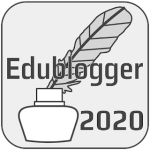Publicaties over DC4E
- The means to a blend: A practical model for redesign of face-to-face education to blended learning / Maren Scheffel, Evelien van Limbeek, Didi Joppe, Judith van Hooijdonk, Chris Kockelkoren, Marcel Schmitz, Peter Ebus, Peter Sloep, and Hendrik Drachsler
Abstract
Learning design models provide guidelines and guidance for educators and course designers in the production and delivery of educational products. It is seen as benecial to base learning designs on general learning theories, but these must be operationalised into concrete learning design solutions. We therefore present one such educational design model: the Design Cycle for Education (DC4E). The model has primarily been created to support the shift from traditional face-to-face education to blended learning scenarios. The cycle describes eight steps that can be used iteratively in the (re)design of educational products and provides educators and course designers with a exible but clearly structured design model that enables them to reinvent traditional course content for blended learning with appropriate learning design tools.
Scheffel M. et al. (2019) The Means to a Blend: A Practical Model for the Redesign of Face-to-Face Education to Blended Learning. In: Scheffel M., Broisin J., Pammer-Schindler V., Ioannou A., Schneider J. (eds) Transforming Learning with Meaningful Technologies. EC-TEL 2019. Lecture Notes in Computer Science, vol 11722. Springer, Cham. https://doi-org.zuyd.idm.oclc.org/10.1007/978-3-030-29736-7_70
- The Design Cycle for Education (DC4E): A practical model for the design of blended and online education / Maren Scheffel, Marcel Schmitz, Judith van Hooijdonk, Evelien van Limbeek, Chris Kockelkoren, Didi Joppe en Hendrik Drachsler
Abstract
The need for more and better online and blended education has lately become even more apparent. Many educational institutions had to pivot to emergency remote teaching. While online learning in itself is nothing new, the scope, suddenness and speed of this shift certainly was. However, courses and modules created for face-to-face settings, cannot simply be turned into blended or fully online ones easily. Learning design models can provide guidelines and guidance. Often, however, they are not constructed in a comprehensive way and are mainly conceptual. We thus created a procedural design model enriched with templates, tools, information and design examples to specifically support and facilitate the (re)design of blended and online learning and teaching and to thus provide quality education: the Design Cycle for Education (DC4E).
Scheffel, M., Schmitz, M., van Hooijdonk, J., van Limbeek, ., Kockelkoren, C., Joppe, D. & Drachsler, H., (2021). The Design Cycle for Education (DC4E). In: Kienle, A., Harrer, A., Haake, J. M. & Lingnau, A. (Hrsg.), DELFI 2021. Bonn: Gesellschaft für Informatik e.V.. (S. 229-240). https://dl.gi.de/handle/20.500.12116/37016 Open Access freely available online
- Vraagbaak Online Onderwijs heeft in de serie ‘10 modellen voor blended onderwijsontwerp, spaar ze allemaal!’ ook aandacht besteed aan de Design Cycle for Education. Lotte Kips, onderwijskundig schrijver en redacteur bij de Vraagbaak Online Onderwijs heeft Marcel Schmitz en Judith van Hooijdonk hierover gesproken. Hieronder haar artikel, dat op 31 oktober 2022 door SURF is gepubliceerd.


